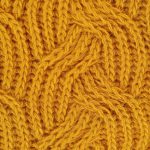You’ll want to treat your Angora clothing gently to keep its softness and shape. Always hand wash in cool water with mild detergent, soak briefly, then rinse carefully. Lay flat to dry away from sunlight to avoid stretching or damage. Store folded in breathable bags and keep clean to stop moths. Blot stains quickly with cold water and detergent. Follow these basics, and you’ll protect your delicate garment’s fluffiness and warmth. There’s much more to discover about caring for this special fabric.
Table of Contents
Key Takeaways
- Hand wash Angora garments gently in cool water with mild detergent to preserve softness and prevent damage.
- Air dry flat on a clean towel away from direct sunlight or heat to avoid stretching and fiber damage.
- Store folded in breathable cotton bags or drawers, avoiding plastic to prevent moisture buildup and moth infestation.
- Use natural repellents like cedar blocks and ensure garments are clean before storage to deter moths.
- Treat stains promptly by blotting gently and using mild detergent with cold water, then air dry flat.
Understanding Angora Fabric: What Makes It Unique
Angora fabric stands out because it’s made from the soft, silky fur of Angora rabbits. When you wear Angora, you immediately notice its lightweight warmth and exceptional softness, unlike any other wool.
Angora fabric delights with its soft, silky feel and lightweight warmth, unlike any other wool.
Its natural fibers have a unique smooth texture that feels gentle on your skin, making it perfect for sensitive skin types. The fabric also has excellent insulation properties, trapping heat while remaining breathable.
You’ll find Angora is delicate, prone to shedding and pilling if not handled correctly, so you need to treat it with care. Its luxurious appearance comes from the fiber’s natural sheen, giving your clothing a subtle, elegant glow.
Understanding these qualities helps you appreciate why Angora requires special attention in your wardrobe.
How to Properly Wash Angora Garments
You’ll want to hand wash your Angora garments gently to keep the fibers soft and intact.
After washing, drying them flat and away from direct heat will help maintain their shape.
Proper storage is also key to prevent damage and keep your pieces looking fresh.
Hand Washing Techniques
Because delicate fibers require gentle care, hand washing your Angora garments is the best way to maintain their softness and shape.
Start by filling a basin with cool water and adding a small amount of mild detergent designed for wool or delicate fabrics. Submerge your garment and gently swirl it around without rubbing or wringing, which can damage the fibers.
Let it soak for about 10 minutes to loosen dirt. After soaking, rinse thoroughly in cool water until no soap remains.
Press the garment gently against the basin’s side to remove excess water—never twist or wring it.
Following these steps guarantees your Angora stays soft and retains its natural beauty without risking shrinkage or fiber damage.
Drying and Storage Tips
After hand washing, handling your garment with care during drying and storage helps preserve its softness and shape.
Gently press out excess water without wringing or twisting, then lay your Angora piece flat on a clean towel. Reshape it to its original form and let it air dry away from direct sunlight or heat sources. Avoid hanging, as this can stretch the delicate fibers.
Once dry, store your Angora clothing folded in a breathable cotton bag or drawer to prevent snagging and maintain airflow. Keep it away from moth-prone areas by using natural repellents like cedar blocks.
Following these steps guarantees your Angora garments stay cozy, soft, and in great condition for seasons to come.
Drying Techniques to Preserve Angora Softness
Although angora fibers are delicate, you can maintain their softness by drying them carefully.
First, never wring or twist your angora clothing; instead, gently press out excess water using a clean towel.
Lay the garment flat on a dry towel in its natural shape to air dry. Avoid hanging angora pieces, as this can stretch the fibers and distort the shape.
Keep your garment away from direct sunlight or heat sources like radiators, which can cause shrinkage and damage.
If you use a drying rack, make certain it’s wide and flat to support the garment evenly.
Storing Angora Clothing to Prevent Damage
To keep your Angora clothing in great shape, store it in a cool, dry place away from direct sunlight.
Use breathable garment bags or cotton storage containers to maintain ideal conditions.
Don’t forget to protect your pieces from moths by adding natural repellents like cedar blocks or lavender sachets.
Ideal Storage Conditions
When you store Angora clothing properly, you protect its delicate fibers from damage and maintain its softness.
Always keep your Angora pieces in a cool, dry place away from direct sunlight, which can fade colors and weaken fibers.
Use breathable cotton garment bags or storage boxes to allow air circulation and prevent moisture buildup.
Avoid plastic bags, as they trap humidity and promote mildew.
Fold your Angora garments gently to avoid stretching, and place acid-free tissue paper between folds to minimize creases.
Keep your storage area clean and dust-free, as dirt can degrade the fabric over time.
Following these ideal storage conditions helps preserve your Angora clothing’s luxurious feel and extends its lifespan, so you can enjoy it season after season.
Avoiding Moth Damage
Proper storage not only keeps your Angora clothing fresh but also helps protect it from pests like moths.
To avoid moth damage, store your garments in airtight containers or sealed garment bags. Moths are attracted to natural fibers like Angora, so eliminating their access is key.
Adding natural repellents such as cedar blocks or lavender sachets can further deter moths without harmful chemicals.
Make sure your clothing is clean before storing, as moths are drawn to dirt and sweat.
Regularly inspect stored items for signs of damage or moth activity.
Tips for Removing Stains From Angora
Removing stains from angora requires quick action and gentle care to preserve the delicate fibers.
First, blot the stain with a clean, dry cloth—never rub, as this can damage the fabric.
Blot stains gently with a clean, dry cloth—avoid rubbing to protect the delicate angora fibers.
Next, mix a small amount of mild detergent with cold water and gently dab the stain using a soft sponge or cloth. Avoid soaking the garment.
Rinse carefully with cold water by dabbing to remove soap residue. For stubborn stains, try a mixture of cold water and white vinegar, applied gently.
Always test any solution on a small, hidden area first.
After treatment, lay your angora piece flat to dry, away from direct heat or sunlight to maintain its softness and shape.
Acting fast and handling stains delicately keeps your angora looking pristine.
Preventing Pilling and Maintaining Angora’s Fluffiness
To keep your angora garments looking soft and fresh, you’ll want to take steps that prevent pilling and maintain their natural fluffiness. Avoid friction by wearing your angora with smooth fabrics and store items folded rather than hung. When washing, use a gentle cycle or hand wash with mild detergent, and always lay flat to dry. Regularly fluff your garment by gently shaking or using a soft brush.
| Action | Benefit |
|---|---|
| Wear smooth fabrics | Reduces friction and pilling |
| Fold garments | Prevents stretching and wear |
| Hand wash or gentle cycle | Protects fibers |
| Air dry flat | Maintains fluffiness |
Frequently Asked Questions
Can Angora Clothing Trigger Allergies in Sensitive Individuals?
Yes, angora clothing can trigger allergies if you’re sensitive to animal fibers. You might experience itching or irritation. It’s best to test a small area first or consult a doctor before wearing angora garments.
Is Angora Fabric Environmentally Sustainable Compared to Other Fibers?
Imagine a slow-growing tree; angora’s sustainability depends on careful farming. You’ll find angora less water-intensive than cotton but raising rabbits can impact land and ethics, so it’s eco-friendly only when sourced responsibly.
How Long Does Angora Clothing Typically Last With Proper Care?
With proper care, your angora clothing can last several years. You’ll need to handle it gently, avoid frequent washing, and store it properly to maintain its softness and prevent damage over time.
Are There Specific Brands Known for High-Quality Angora Products?
Imagine wrapping yourself in clouds—that’s what brands like Naadam and The Elder Statesman offer with their angora. You’ll find their high-quality fibers feel luxuriously soft and last beautifully with proper care.
Can Angora Be Blended With Other Fabrics Without Losing Softness?
You can blend angora with other fabrics like wool or silk without losing softness, as long as the blend maintains a high angora percentage. This keeps the softness while adding durability and structure to your garment.
- Does Chiffon Fabric Stink - July 15, 2025
- Does Chiffon Fabric Affect the Economy - July 15, 2025
- Does Cotton Fabric Have a Nap - July 15, 2025







